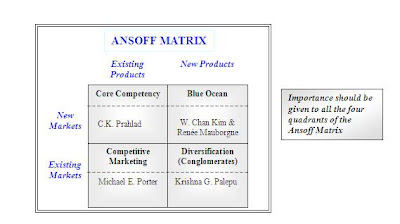Mostly, I hear Organization Leaders involved in evaluation of business strategies, competitive positioning, financial plans, operational processes, technological assets and organization structure, but seldom undertaking conscious review of Management Processes. My contention is that well aligned and oiled Management Processes have far greater impact in achieving effectiveness of business strategies and efficiency gains of operational initiatives, then traditionally given attention to.
Three key Management Processes;
Information Management process, Decision Making process, and Communication process are essential part of organization machinery and once established tend to have life of their own. Unless their robustness and alignment with overall business strategy and execution plan are ascertained, they have the potential to undermine other efforts of enhancing organization performance.
Technological Innovation and Gen-Y employees orientation demands and make possible complete reconfiguring of these Management Processes from the traditional way these were handled. Let us consider some questions that may help review each of these processes:
Information Management process:
Are we tapping all kind of internal and external sources of information that can help make sense of the complex world? How many of innovative ideas are coming from outside the company (say customers)?
Are we able to derive actionable insights/ foresights out of all the information that we have access to? How much of unstructured data on the web is mined to understand what our customers/ stakeholders liked about Company (products and pronouncements) last week?
Are we ensuring that all those who have to act, use the same set of information and the most recent one? How many customer interlocks across the organization are informed by unified understanding of customer preferences, and interaction history?
Decision Making process:
Are the decisions that are centralized, emerging out of conscious assessment of gains in the form of consistent and effective roll-out or out of power concentration or tradition? When was the debate (experiment) to decentralize some decisions undertaken last?
Are managers consciously selecting the right decision making process (collective or individual) based on context or one style in predominant as part of organization culture? How well understood are the accountability norms related to joint decision making?
Are leaders balancing the intuitive and insight (data backed) based decision making? How often intuitive decisions are betted for experimentation, then waiting for additional data backed evidence?
Communication process:
Are leaders across the organization only telling orders or explaining rationales as well, to facilitate execution? To what extent, leaders are open to questioning existing practices and ready to listen and debate from say new hires or interns?
To what extent, communication networks, formal and informal, are supportive of positive collaboration and partnering across silos? What percent of email traffic for middle managers are with colleagues other than immediate bosses or subordinates?
Are
we using new channels of communication that are symbolic of interconnected social age? How strategically are we using twitters, blogs, web 2.0 technologies to connect, convey and correspond effectively and coherently across the stakeholder community?
Review of the Management processes facilitated by above questions will surely throw-up some areas that need to change. Change in Management processes require intervention design, comprising leadership sensitization & coaching, and creating new technological infrastructure besides sustained monitoring, till new processes become institutionalized. Not an easy task, but worth it.
Lets Reflect!!!
You can also visit the adjacent poll to express your opinion and see what others are thinking.






